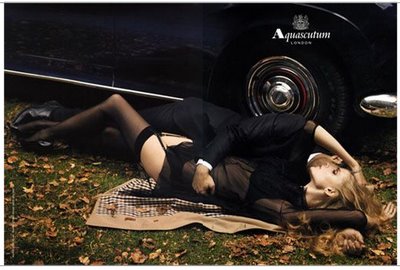matéria fenomenal que saiu na wired desse mês chamada the thin pill. o artigo fala que 75 milhões de americanos tem uma doença chamada "síndrome metabólica", quase uma nova definição para a obesidade. e que esse nome foi criado como uma estratégia de marketing pela indústria farmacêutica para que a própria crie novas drogas, aumentando o seu caixa anual em 18 bilhões de dólares. impressionante.
"Cunningham is among the first wave of Americans to be diagnosed with metabolic syndrome, a condition that, though only concretely defined five years ago, is now said to afflict as many as 75 million Americans – whether they know it or not. We sit, indeed, amid an epidemic of metabolic syndrome, a fact all the more remarkable because so few people are familiar with it. For this is no virus on the loose, no plague that has spread unchecked. Rather, metabolic syndrome is just a new way to think about a cluster of well-known and increasingly prevalent conditions. Metabolic syndrome is characterized by five risk factors: high blood pressure, high blood sugar, high triglycerides (fatty acids in the bloodstream), low HDL ("good") cholesterol, and obesity. Of the five, obesity – which is itself often referred to as an epidemic – is the most important, because the rise of the morbidly overweight is directly driving the rise in the syndrome. Metabolic syndrome is, in fact, almost indistinguishable from obesity – at least 85 percent of those who have the syndrome are obese or overweight.
But is it real? In some ways, no. You can't see metabolic syndrome through a microscope, or detect it through a single blood test. Since it's a checklist of risk factors rather than symptoms, it stretches the way we think of disease. It's very much a human invention, a "syndrome" – that term researchers assign to things they don't quite understand. But in other ways, it's absolutely real. Though championed by drug companies, it's been defined and recognized by legitimate health organizations. And it's definitely unhealthy. You can't die of metabolic syndrome, but you can die of what it leads to: diabetes and heart disease.
Metabolic syndrome, in other words, could be the great disease of our age. Or it could be a sign of how diseased our age is, a demonstration of how certain we are that there is always a scientific explanation, a diagnosis, and perhaps a pill for what ails us. Either way, metabolic syndrome is a disease whose time has come.
That's what makes metabolic syndrome so compelling: It takes personal responsibility out of the equation. Turning the epidemic of obesity into a slightly smaller epidemic of metabolic syndrome puts it in the province of science, not lifestyle. With science, we're not confined to a futile path of diet and exercise. With science, we get drugs.
Should the right drugs come along, the metabolic syndrome market "promises to be as big or bigger" than cholesterol, Pharmaceutical Executive magazine predicted a couple of years ago. And rimonabant, also known by its brand name, Acomplia, may well be the first of those drugs. JP Morgan analysts predict that rimonabant sales could hit $5 billion a year.
In the drug industry, finding disorders like metabolic syndrome is known as "developing new disease markets" or "branding a condition." Industry critics have their own term for it: "disease mongering," they say, shaking a finger at pharmaceutical firms for devising treatments for normal conditions of life – menopause, anxiety, obesity. But as tempting a villain as the drug industry makes, it's not so clear that obesity is, in fact, a normal part of life. Blame corn subsidies or videogames or PepsiCo, but obesity has transformed our nation in the past 30 years. Diet and exercise? It's easy to recommend, and it's good in theory, but there's surprisingly little proof that lifestyle intervention actually works as a weight-loss strategy.
So goes the domino effect of recognition: First the National Institutes of Health and the American Heart Association identify metabolic syndrome as a disease, then the FDA creates an indication, and then the HMOs – which have largely refused to reimburse patients for obesity treatments – agree to pick up the tab for metabolic syndrome prescriptions, thus making physicians more likely to prescribe them for their patients. The only drawback is that the market could be too big: If the HMOs see a diagnosis that fits 75 million Americans and a potential bill for $18 billion, they might simply refuse to pay it.
That, of course, is the demographic ripple effect of diseases like metabolic syndrome. As the medical establishment reaches further down the causal chain to identify more risk factors and spot them earlier, and as it assigns names, definitions, and treatments to these diagnoses, more and more people are swept into the disease net. Add in our genetic biomarkers and it's clear that disease won't be something we can avoid anymore. It will be something we simply have, just as we have freckles or wear glasses. We will all carry our disease portfolios and will be identified through our ailments – or more precisely, our inclinations toward certain ailments. Metabolic syndrome is just the latest step on this path."
absurdo.













